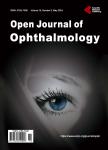The Influence of Keratometry on Visual and Refractive Outcomes after Myopic LASER <i>in Situ</i>Keratomileusis
The Influence of Keratometry on Visual and Refractive Outcomes after Myopic LASER <i>in Situ</i>Keratomileusis作者机构:Instituto de Oftalmologia Dr. Gama Pinto Lisbon Portugal
出 版 物:《Open Journal of Ophthalmology》 (眼科学期刊(英文))
年 卷 期:2018年第8卷第2期
页 面:84-90页
学科分类:1002[医学-临床医学] 100214[医学-肿瘤学] 10[医学]
主 题:Myopia Astigmatism LASER in Situ Keratomileusis Keratometry Spherical Equivalent Flat Cornea Steep Cornea
摘 要:To evaluate the effect of preoperative keratometry on visual and refractive outcomes after Myopic LASER in Situ Keratomileusis (LASIK) in eyes with preoperative spherical equivalent (SE) of -6.00D or less. Material and Methods: A retrospective study enrolling clinical records of 482 eyes of 275 patients with myopia who underwent LASIK between 2009 and 2016. Subjects were grouped according to the degree of preoperative mean keratometry (Km), into three groups: Group 1 (Flat Cornea): Km ≤ 42.00 diopters (D);Group 2: 42.00 46.00D;Group 3 (Steep Cornea): Km ≥ 46.00D. To evaluate the prognostic impact of keratometry in Myopic LASIK, we considered the results measured at 6 months postoperatively, including uncorrected distance visual acuity (UDVA), postoperative sphere, cylinder, SE and its variation. Results: The mean preoperative SE was -3.91 ± 1.54D, ranging between -0.88 and -6.00D. The percentage of eyes achieving a postoperative SE of ±0.50D was 39.5%, 31.8% and 26% in groups 1, 2 and 3 respectively. Moreover, in group 3, 14.3% of the eyes had a residual SE of -2.00D or greater, contrasting with the groups 1 and 2 with only 6% - 7%. These results were found to be statistically significant. Concerning UDVA, eyes achieving 20/25 or more were 81.5%, 81.8% and 71.5%, and 20/50 or less were 6.7%, 6.2% and 11.7% in groups 1, 2 and 3 respectively. Conclusions: Myopic eyes with steeper corneas seem to have greater tendency to undercorrection, also presenting worse visual outcomes.



